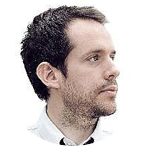About
Designers checklist advices is a personal project by Adrien Heury, french UI/UX designer at NOE interactive and working sometimes with his sister under the name Heury & Heury.
I imagined this webpage while i was reading "The design workflow at a digital agency" by Claudio Guglieri on Medium and remembered an old article with the same approach by Anton Repponen "10 points I always keep in mind while designing" published on Netmagazing.com
As a big fan of codrops tutorials i wanted to make something cool with Fullscreen layout with page transitions and Nifty modal window effect.
So this project happened! Hope you will find it usefull and hope i can add more "checklists advices" of other designers in the future! If you are an amazing designer and have something to share please get in touch
Tweet Follow @Designersadvic3
